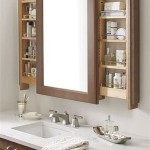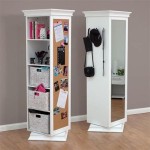How Do You Mirror iPhone to Macbook?
Mirroring an iPhone's screen to a Macbook offers a larger display for various activities, from presenting slideshows and demonstrating apps to enjoying mobile games and streaming videos. This functionality is achievable through several methods, each offering distinct advantages and catering to different needs.
Using AirPlay with QuickTime Player
QuickTime Player, a pre-installed application on macOS, provides a straightforward way to mirror an iPhone screen. This method leverages AirPlay, Apple's proprietary wireless streaming technology. It necessitates a stable Wi-Fi connection between the two devices for optimal performance.
- Connect both the iPhone and Macbook to the same Wi-Fi network.
- Open QuickTime Player on the Macbook.
- Navigate to File > New Movie Recording.
- Click the dropdown arrow next to the record button.
- Select the iPhone from the list of available AirPlay devices.
- The iPhone screen will then be mirrored on the Macbook display.
Mirroring with the Reflector 3 Software
Reflector 3 is a third-party application that allows wireless screen mirroring from various devices, including iPhones, to a Mac. Unlike QuickTime, it offers additional features like recording the mirrored screen and adding voiceovers. It requires a one-time purchase, offering a free trial period for evaluation.
- Download and install Reflector 3 on the Macbook.
- Launch the application.
- On the iPhone, open Control Center.
- Tap "Screen Mirroring".
- Select the Macbook running Reflector 3 from the list of available devices.
- The iPhone's display will be mirrored on the Macbook.
Utilizing LonelyScreen for Screen Mirroring
LonelyScreen functions similarly to Reflector 3, acting as an AirPlay receiver on the Macbook. It creates a virtual AirPlay device that the iPhone can connect to, facilitating screen mirroring. This application also offers a trial period before requiring a purchase for continued use.
- Download and install LonelyScreen on the Macbook.
- Open the application.
- On the iPhone, swipe up to access Control Center.
- Tap on "Screen Mirroring".
- Select "LonelyScreen" (or the custom name you set during installation) from the list.
- The iPhone screen will appear on the Macbook display.
Connecting through a USB Cable and Xcode
For developers or users requiring a more stable and direct connection, mirroring through a USB cable and Xcode provides a reliable solution. This method bypasses the potential instability of Wi-Fi connections and offers minimal lag. It requires Xcode, Apple's integrated development environment, to be installed on the Macbook.
- Connect the iPhone to the Macbook via a USB cable.
- Open Xcode on the Macbook.
- Select "Window" from the menu bar.
- Choose "Devices and Simulators".
- Select the connected iPhone from the left-hand menu.
- Click the "Open Console" button to view the device logs (optional).
- If Xcode doesn't automatically begin mirroring, use the QuickTime method described earlier, selecting the connected iPhone as the camera source.
Choosing the Right Mirroring Method
The optimal mirroring method depends on individual needs and available resources. QuickTime offers a convenient, cost-free solution for basic mirroring. Reflector 3 and LonelyScreen provide additional features like recording and enhanced stability but come at a cost. The Xcode/USB method offers the most stable connection, beneficial for development purposes, but requires installing Xcode. Evaluating these options based on specific requirements will help determine the best approach for mirroring an iPhone screen to a Macbook.
Troubleshooting Common Mirroring Issues
Occasionally, users might encounter issues during screen mirroring. Ensuring both devices are on the same Wi-Fi network resolves most connectivity problems. Restarting both the iPhone and Macbook can sometimes resolve glitches. Checking for software updates on both devices ensures compatibility and addresses any identified bugs. For USB connections, using a different cable or USB port on the Macbook can help eliminate hardware-related issues.
- Ensure both devices are connected to the identical Wi-Fi network.
- Restart both the iPhone and Macbook.
- Check for and install software updates on both devices.
- Try a different USB cable or port (for wired connections).
- Ensure that both devices have Bluetooth enabled, though this is often not required.
- Temporarily disable any firewalls or VPN software that might be blocking communication between the two devices.
- If using third-party software, check for updates or reinstall the application
- Consult the support documentation for the chosen mirroring software.

How To Mirror Iphone Display Macbook Ios 12 Macos Mojave

2024 Updated How To Mirror Iphone Mac With 5 Methods

Three Ways To Mirror Iphone Mac Easily Successfully
How To Mirror Your Iphone Screen A Macbook

2024 Updated How To Mirror Iphone Mac With 5 Methods

How To Use Apple Airplay Mirror Your Iphone Mac Screen On Tv Roku And More Cnet

2024 How To Mirror Iphone Display Mac Ios 14 And Big Sur

How To Mirror Iphone Mac 8 Methods

How To Mirror Your Iphone Macbook Or Any Mac Device Oka Apps

How To Mirror Iphone Screen On Mac Ios Er








